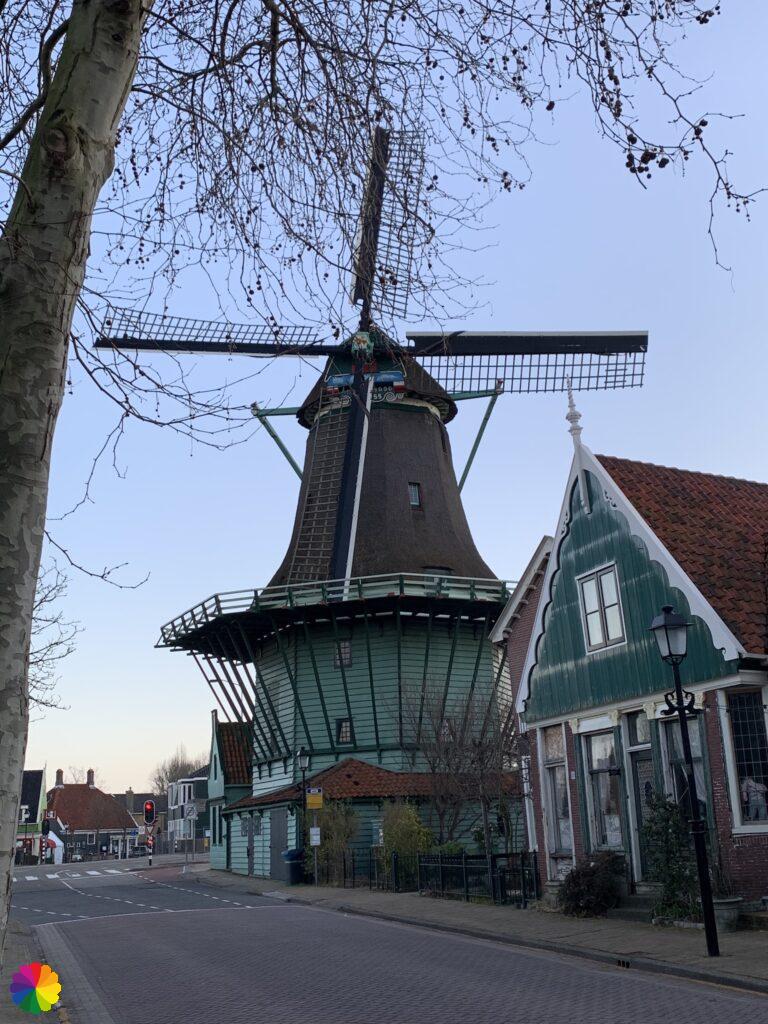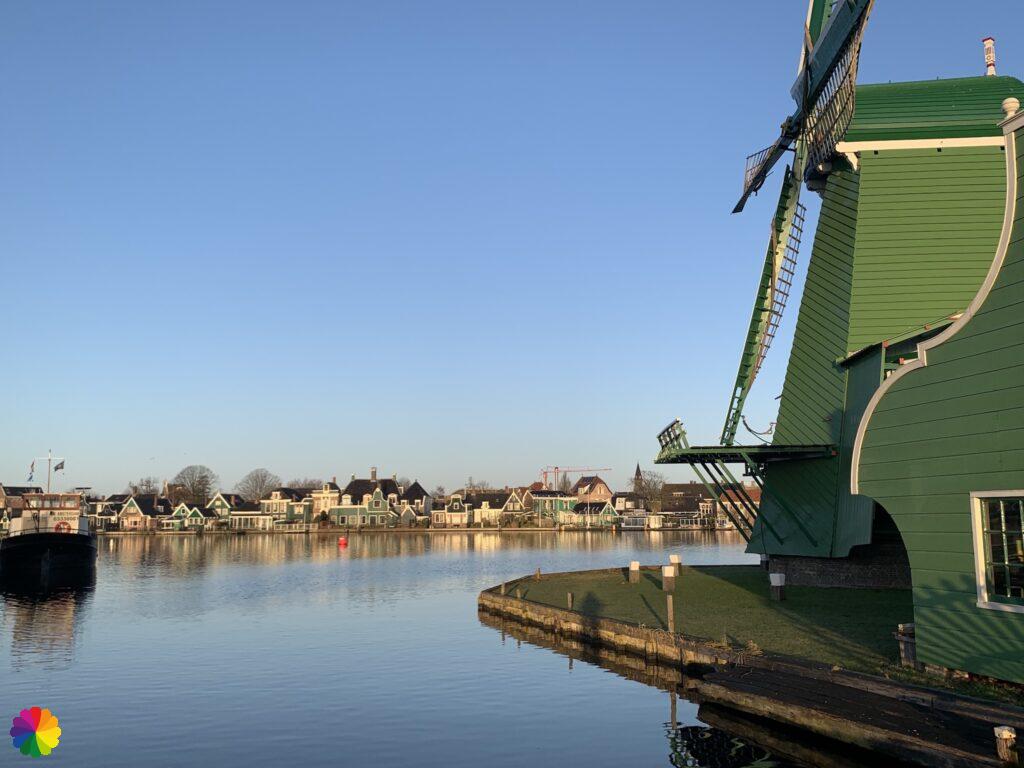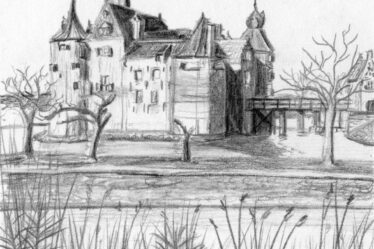It has been two months since I did a long distance hike. Because of the stricter lockdown, from the end of December 2020 until the end of February 2021, I have mainly stayed in Rotterdam for hiking. But I’m getting anxious to hike somewhere else and I heard that black-tailed godwits were seen just above Zaanse Schans. It just so happens that I have a long-awaited hike planned there, which is on the Migration birds trail as well! The hike starts at Zaanse Schans via a small detour to get to the official trail just outside Wormer. I then go via the Engewormer polder, the Jagersveld and the Oostzanerveld to the Twiske nature reserve and recreational area. Halfway through the Twiske I stop my hike and take the bus back home from Den Ilp.

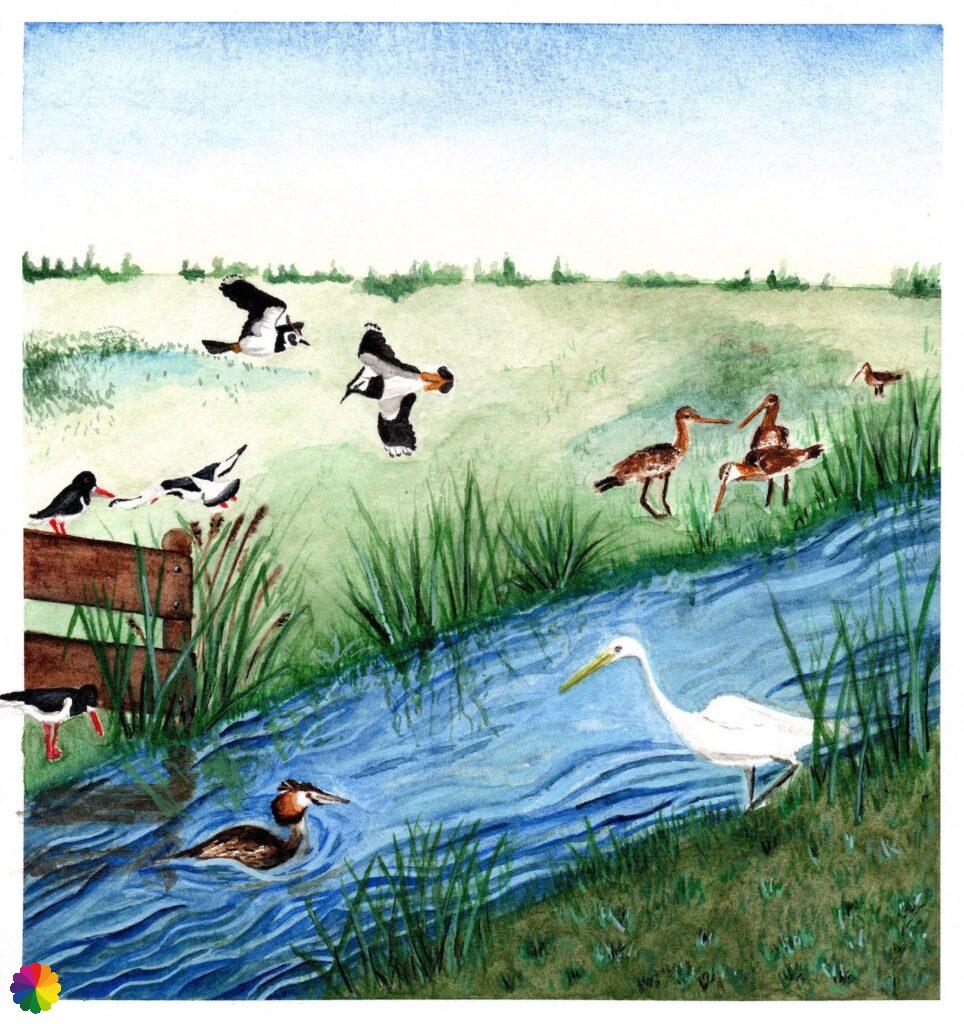
Zaanse Schans
I am on my way to the Zaanse Schans early again. Normally, there is a train from Rotterdam directly to the Zaanse Schans. Very convenient without having to change trains, but today of all days, there are railroad works. As a result, I have to get off at Zaanstad and travel two stops further with a substitute bus. It takes a little longer than usual, but I am still there within an hour and a half.
From Zaandijk Zaanse Schans station, I walk towards the windmills. A whiff of cocoa, already familiar to me from the previous hike, surrounds me. I first go through the Stationsstraat and then turn left into the Lagedijk. Further on, the first Zaanse houses and a windmill come into view.
Because I am so early, I have the opportunity again to photograph windmills at sunrise. This time not at Kinderdijk, as I did earlier without success, but of the other famous windmills. It is a clear morning, so there is a good chance that I will succeed.
The first mill towers above me on a green-coloured scaffold. This is flour mill de Bleeke Dood (in English the Pale Death, don’t ask me why). It is not part of the Zaanse Schans but is located diagonally opposite in Zaandijk. I love this mill already and the other mills are yet to come!
Just after the mill, I turn right onto the Juliana Bridge. From the bridge, several mills can be seen in a row on the left. They stand out beautifully against the light blue sky. Now I have my sunrise photos with windmills after all 🙂 . There is also a windmill on the right of the bridge, but it is more difficult to take a photo, as I am looking against the bright sun.

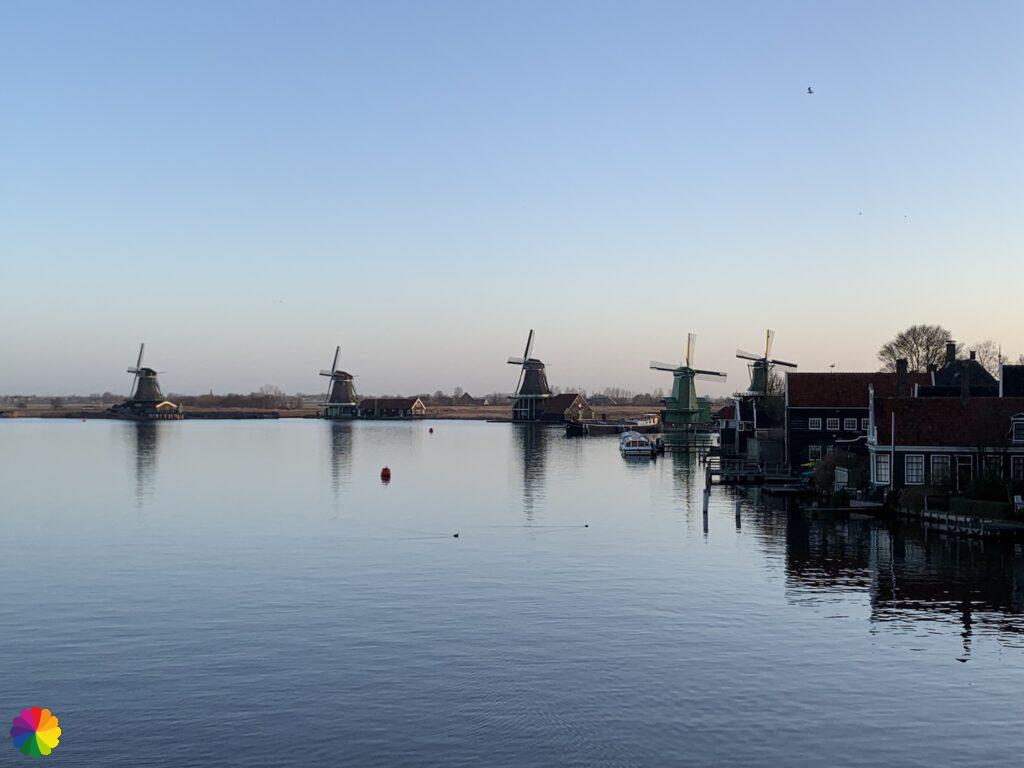

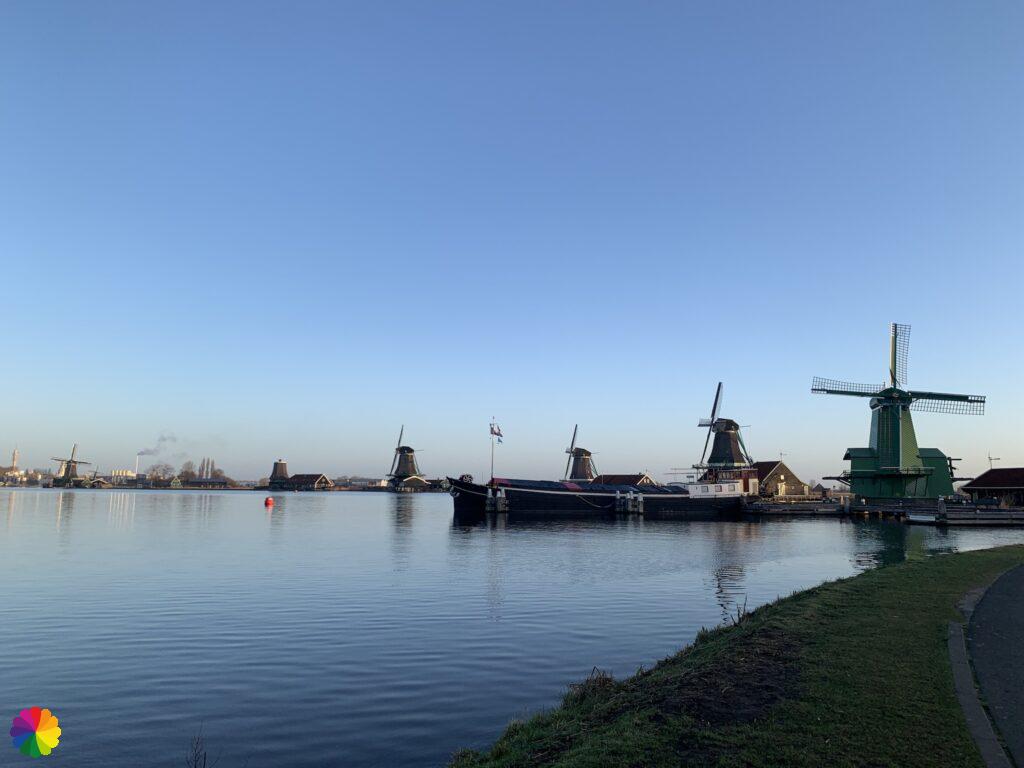
After the bridge, I turn left and walk into Zaanse Schans. I immediately fall in love again with the wooden facades of the Zaanse houses. There is usually plenty to do and see here: museums, restaurants and all sorts of old Dutch shops and crafts. You can also visit several windmills. Now, everything is closed. That is because I am very early, but of course also because of the corona measures. I can now look around on my own pace and don’t have to avoid hordes of tourists.

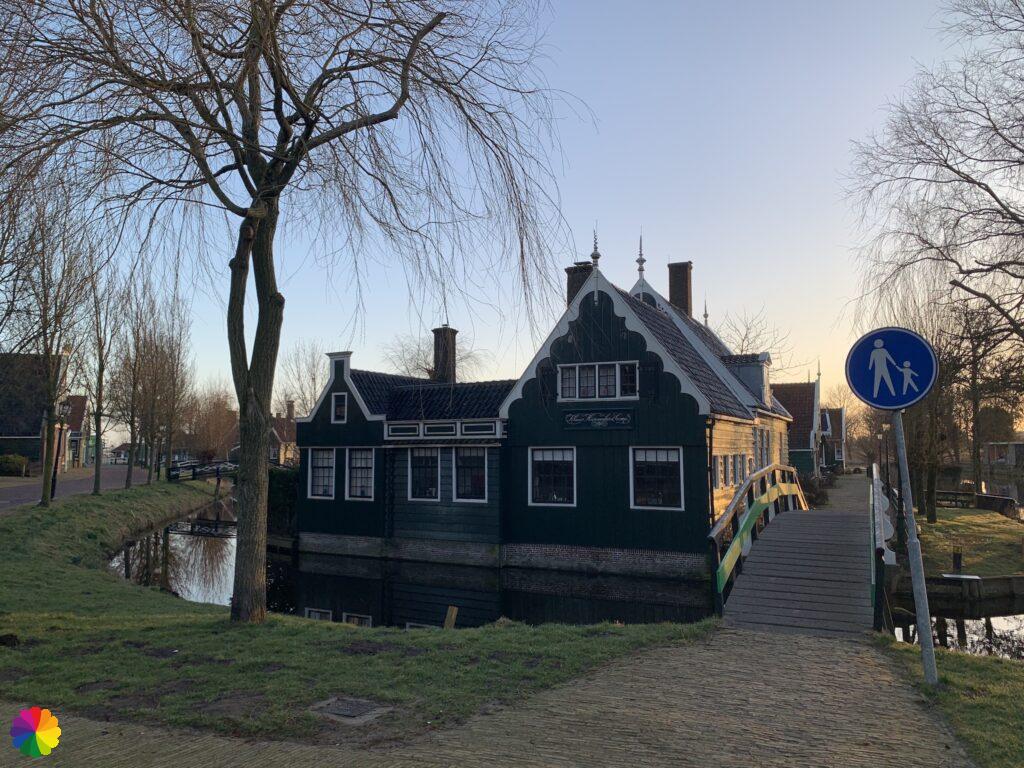

Just before the part with the windmills begins, I take a break and enjoy the view. Opposite of me, a great egret is sitting in the water looking for food. You usually only see egrets far away in the farmlands and when you come closer, they have already flown away. But this one is close by and I can even take photos of him.
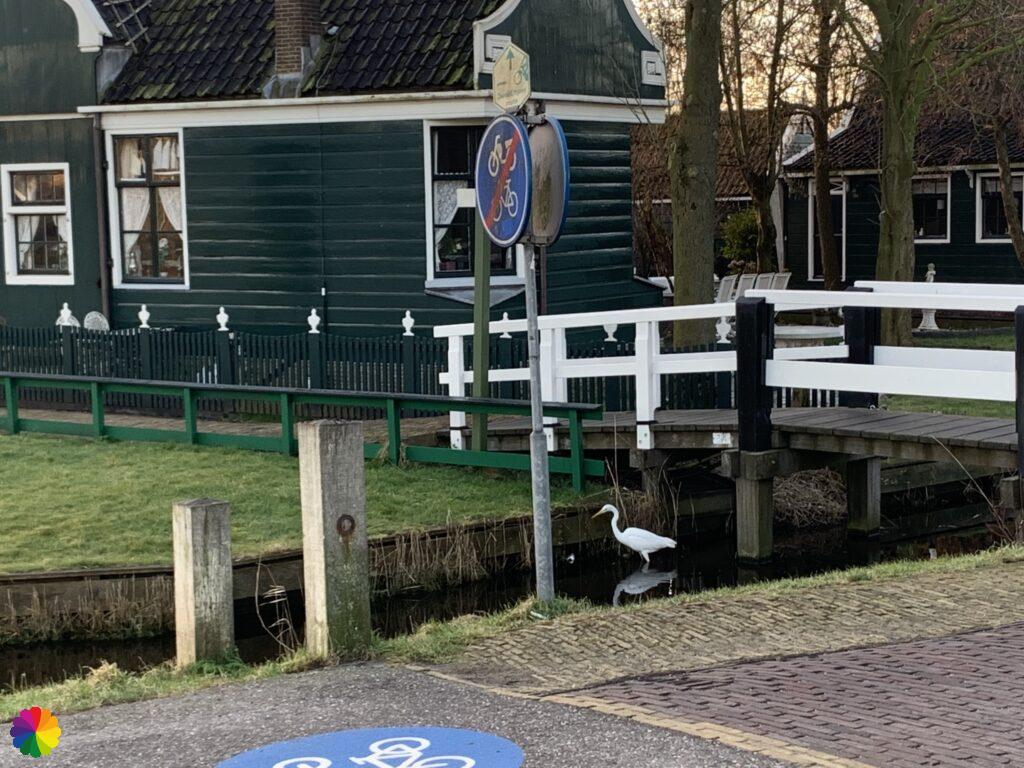
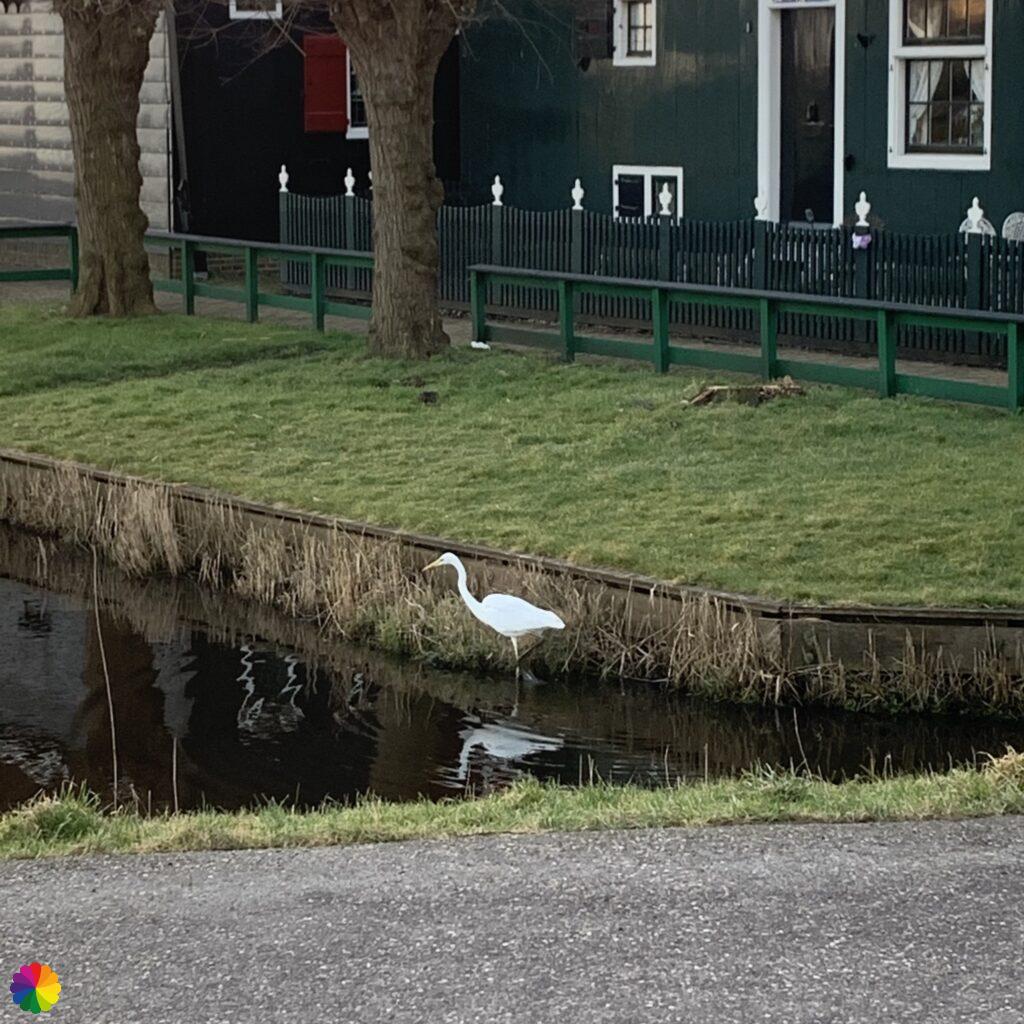
Mills and birds
After my break, it is finally time to walk past the windmills. First, I walk past spice mill de Huisman (the Houseman, equivalent for housewife) and then past wood sawmill de Gekroonde Poelenburg (the Crowned Poelenburg). The nice thing about these mills is that they are all different and also have different functions.
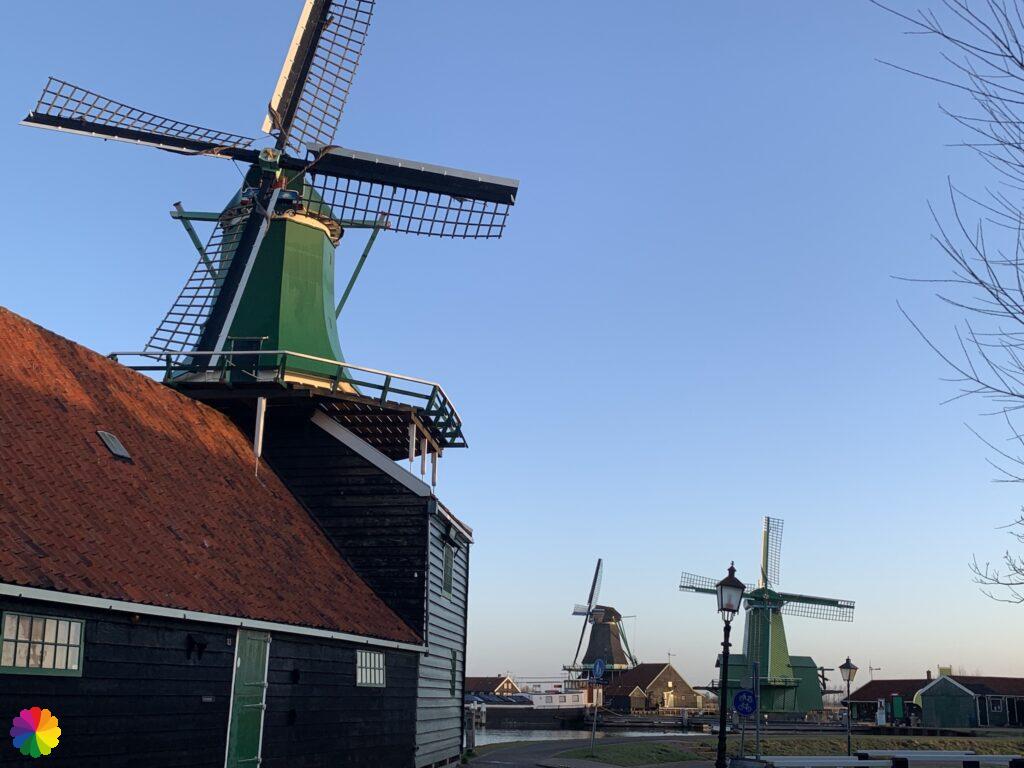
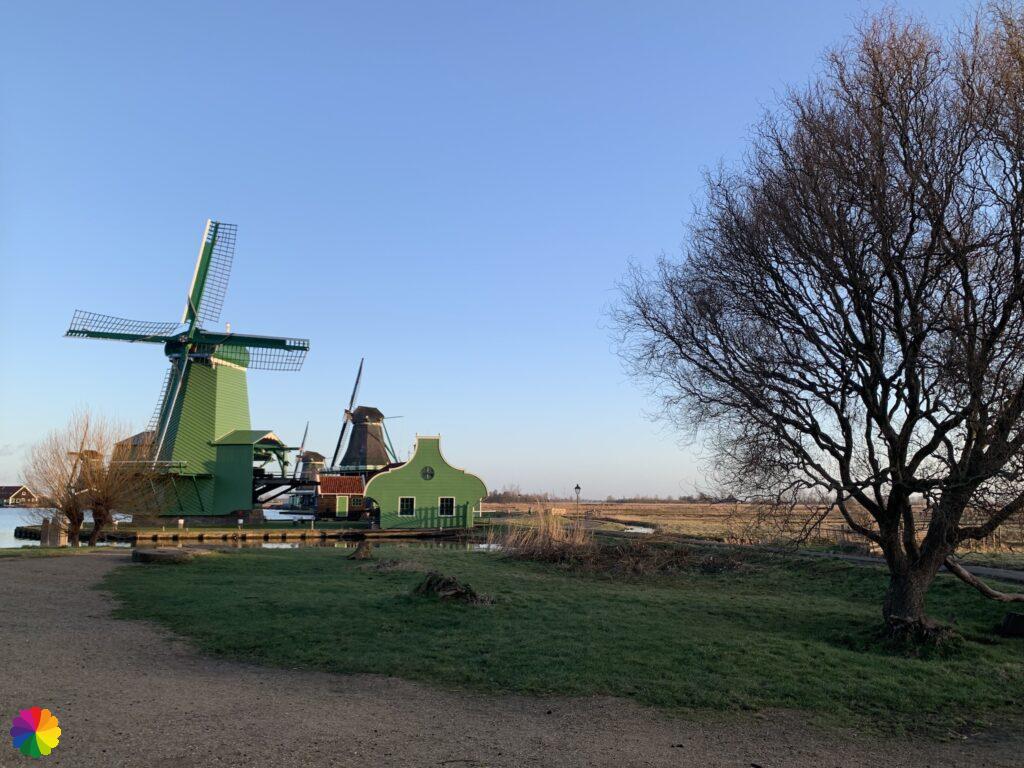

I continue my walk on the footpath alongside the windmills. To my right, I can see grasslands. Could this be where the black-tailed godwits are? I look into the distance and see birds on stilts, but I cannot distinguish which ones they are. I should buy a pair of binoculars one day…
On the path in front of me, there are birds that I do recognise. The old trusty coot is present, but also oystercatchers scurry in front of me. Another bird that I can add to my list.
The oystercatcher is a black and white stilt bird with an orange-red bill and pink legs. This breeding bird is very common in the Netherlands, especially along the coast and in grassland areas. An interesting fact is that they sometimes nest on flat rooftops with lots of pebbles. The eggs and goslings look very much like the pebbles and are therefore well protected against predators. It is also often unsafe for the birds to breed on the ground.
Source (in Dutch): Vogelbescherming

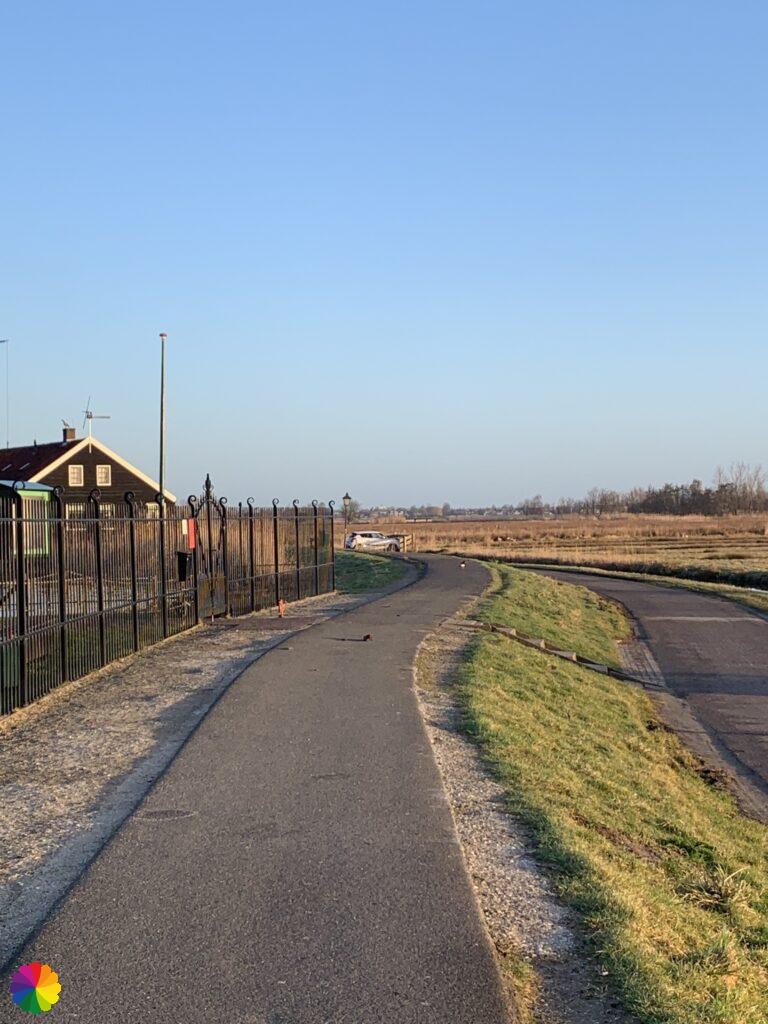


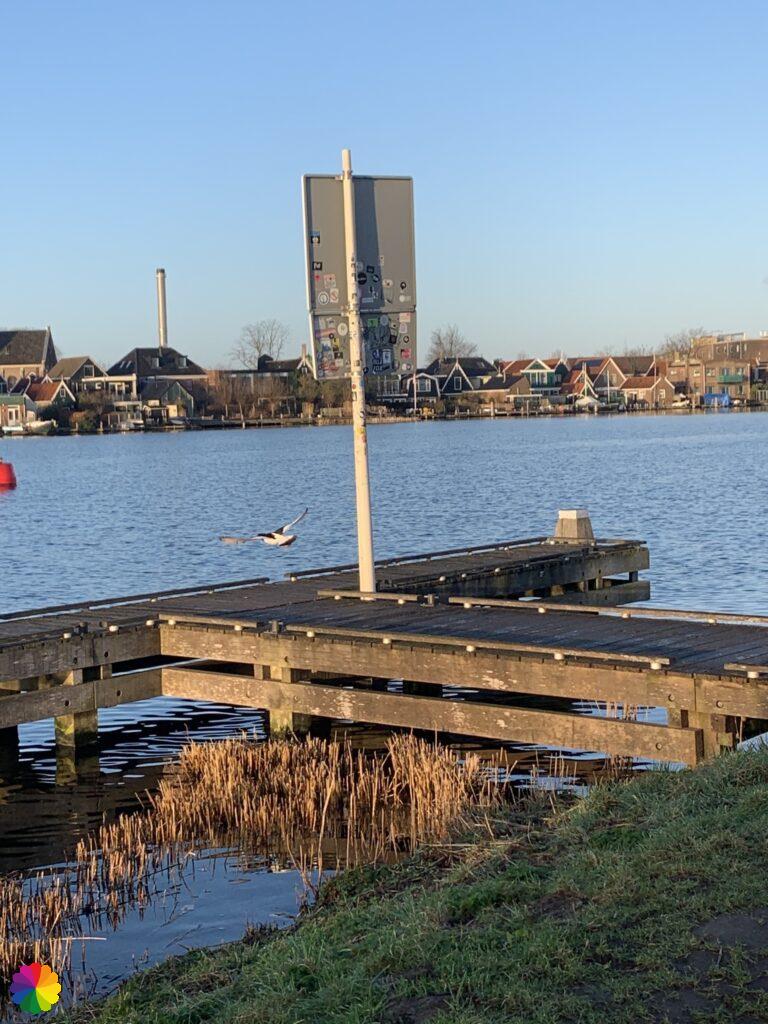
I have only passed two mills so far and there are more to come. I walk past paint mill De Kat (the Cat), oil mill De Zoeker (the Searcher) and sawmill Het Jonge Schaap (the Young Sheep). On the roof of each building next to the mill is a post with a small mill on it. The small mill carries the name of the large mill.

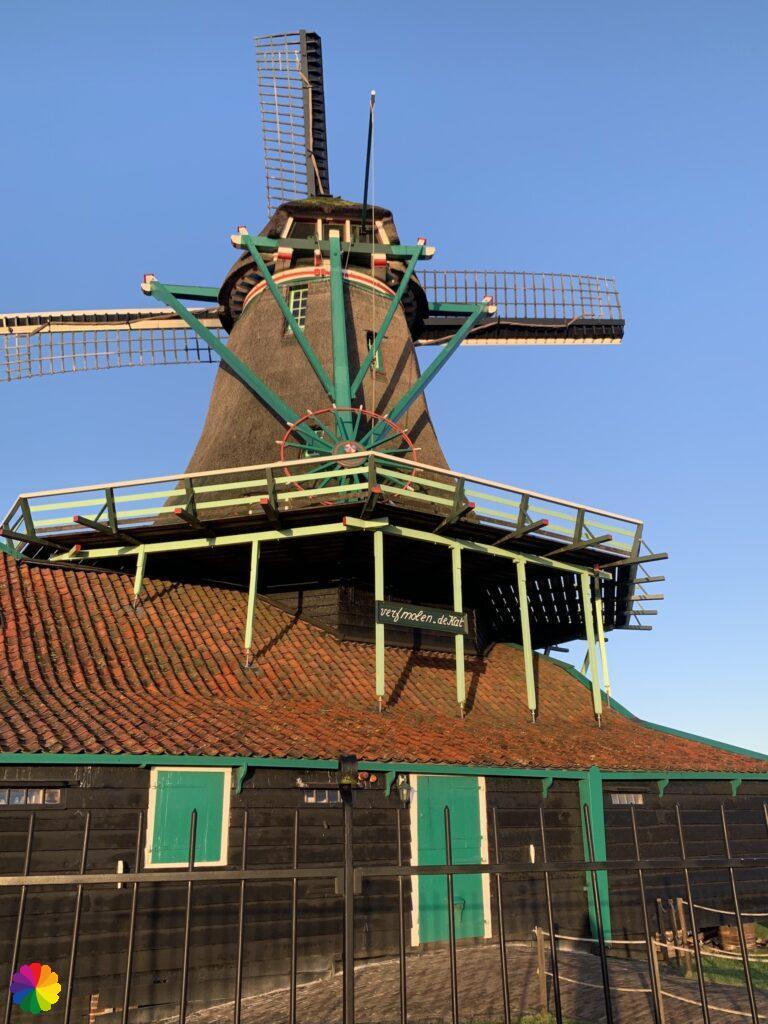

In the meantime I have arrived at the mill without blades. This is the former oil mill de Os (the Ox) and only the hull remains. Meanwhile, the sun has risen higher in the sky and is still casting a golden glow over the windmills. I really love hiking at sunrise! It’s really worth getting up early for.

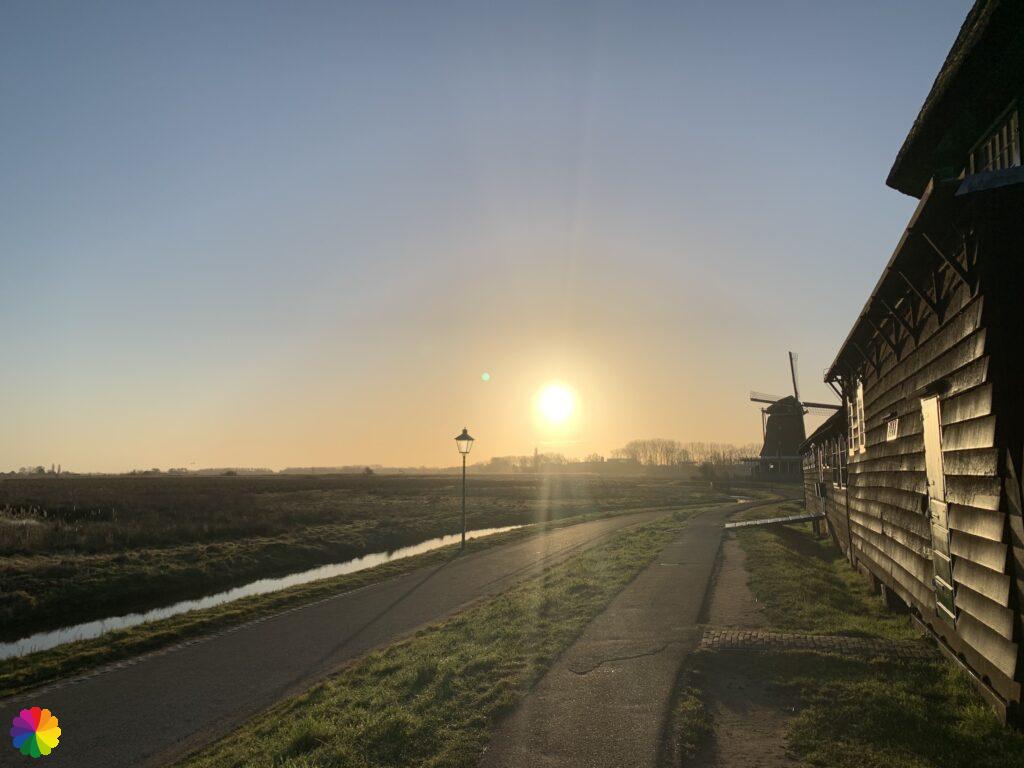
Two more mills to go: wood sawmill Het Klaverblad (the Clover Leaf) and oil mill De Bonte Hen (the Colourful Hen). I am glad that I did this part of the trail. This is highly recommended if you are going to hike the Migration birds trail. After a last look at the windmills and the bright sunshine, it is time to continue with the trail.
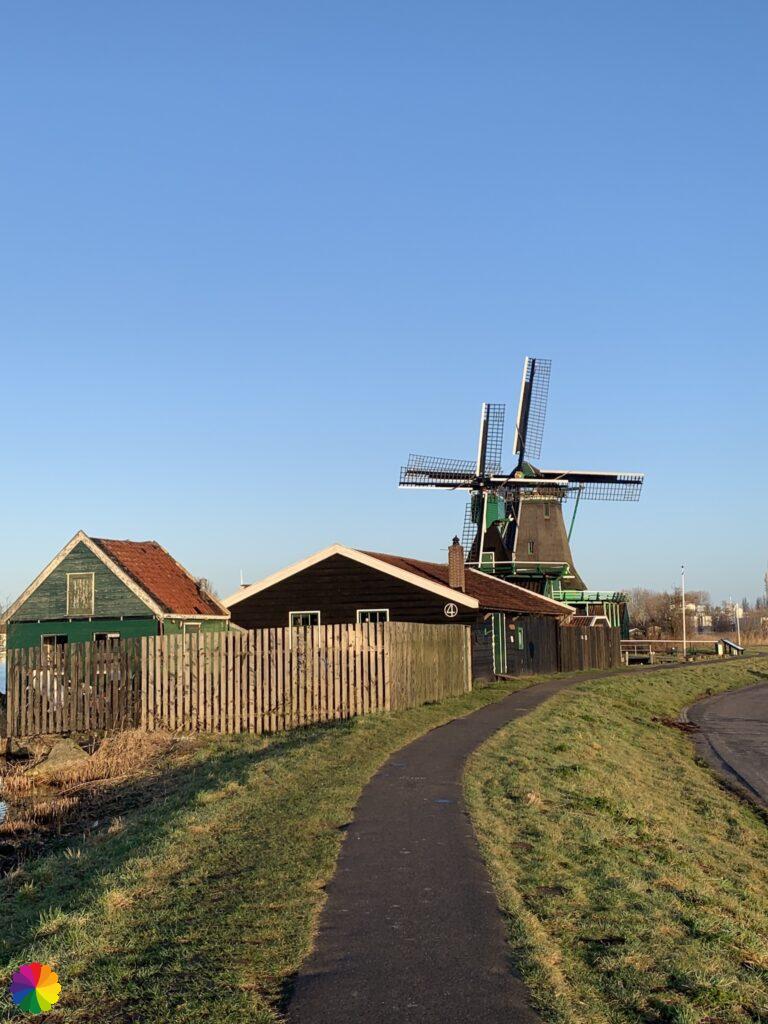
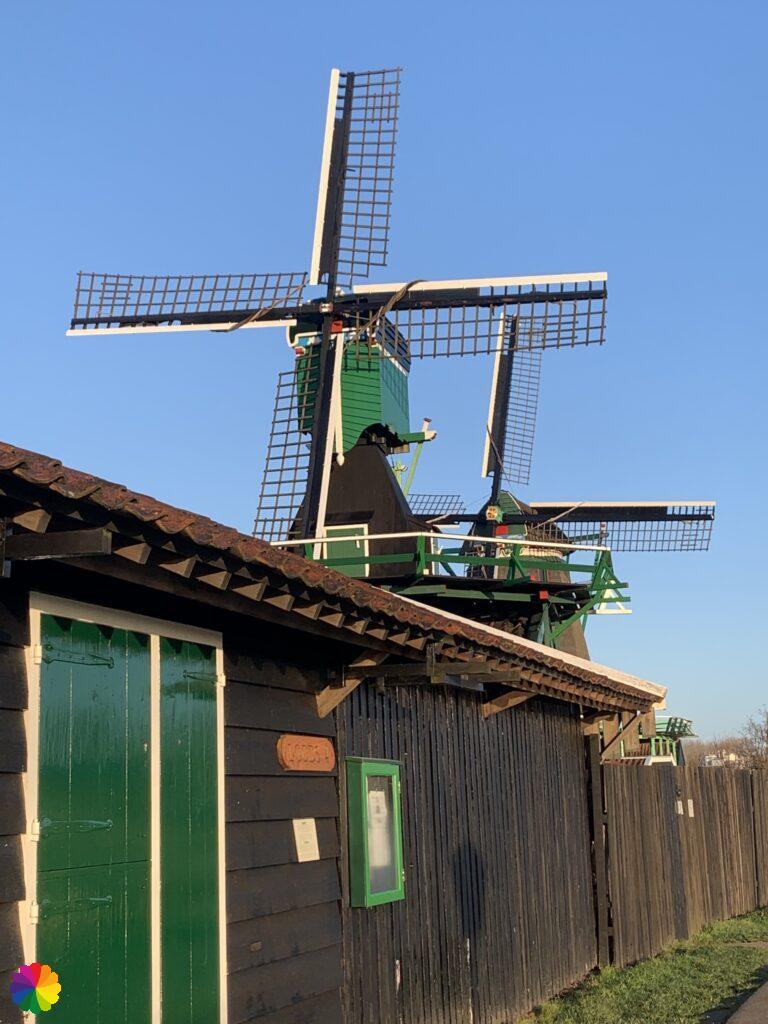


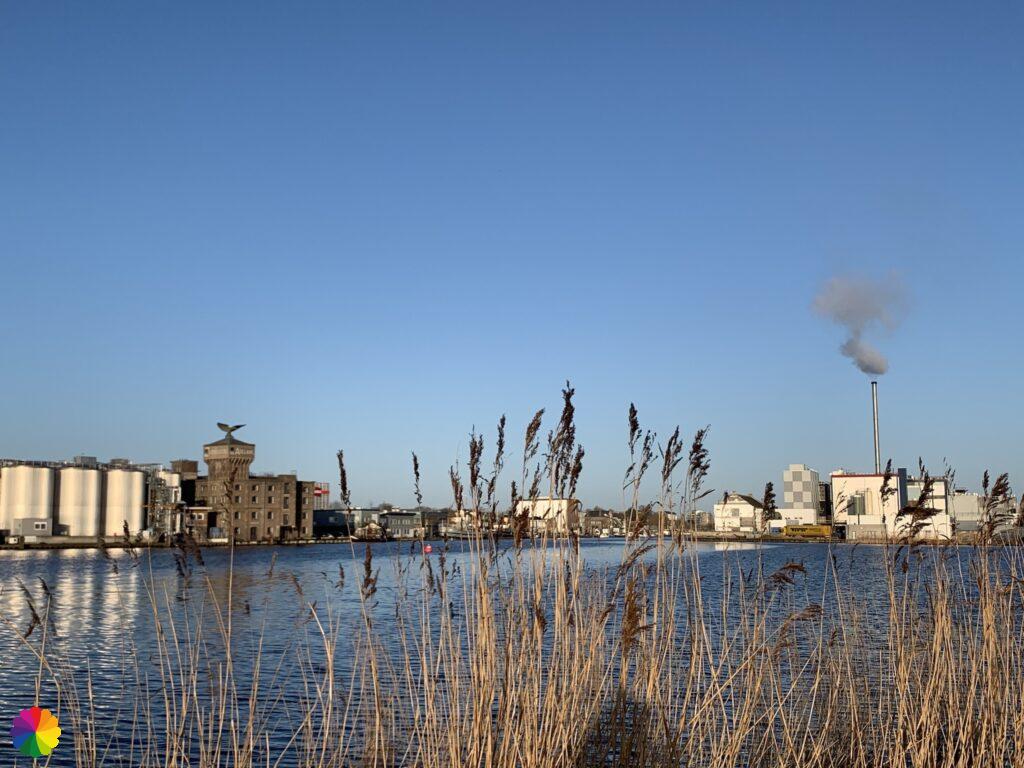
The road bends to the right along the marshy grasslands. I keep looking to see if I can find the black-tailed godwits. I am not the only one, a man on a bicycle passes by with a pair of binoculars and there is also someone peering through binoculars along the grasslands. I don’t have any binoculars, so I go on.
Other trail guide about the same region
Engewormer
Further on I turn left into the Engewormer. This is the name of the road, but also of the town and the polder through which I will be walking the next few kilometres. Near the Bartelsluis I turn right. You can see that it has been very cold last week. In places with little sun there is still ice and snow.
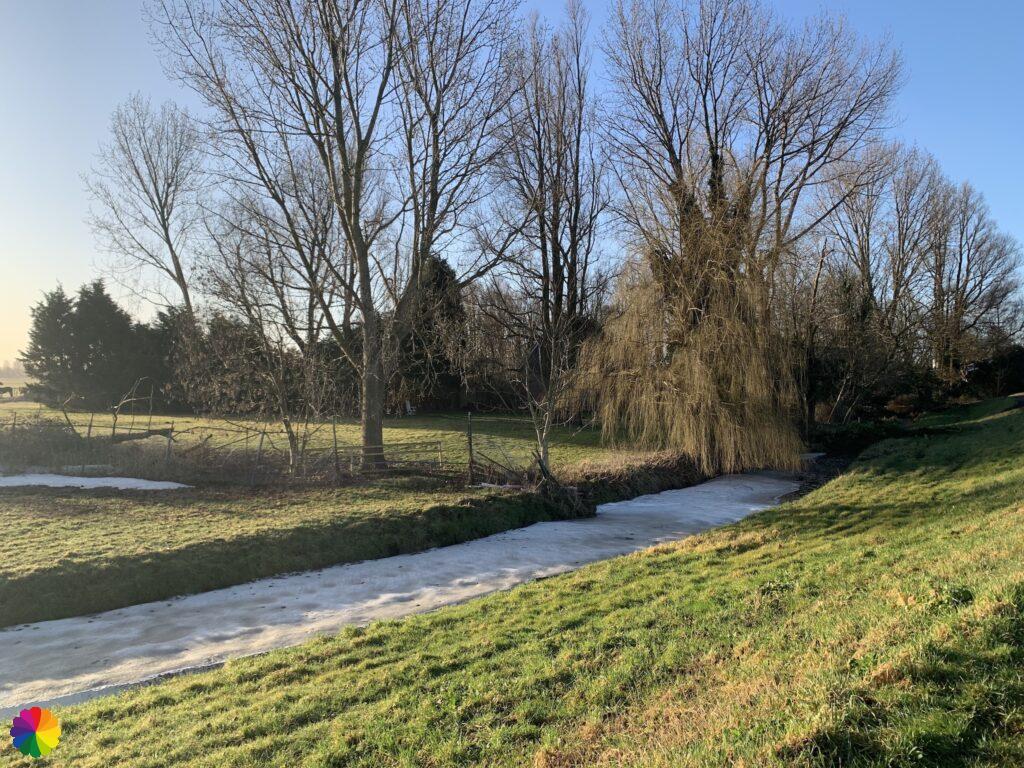
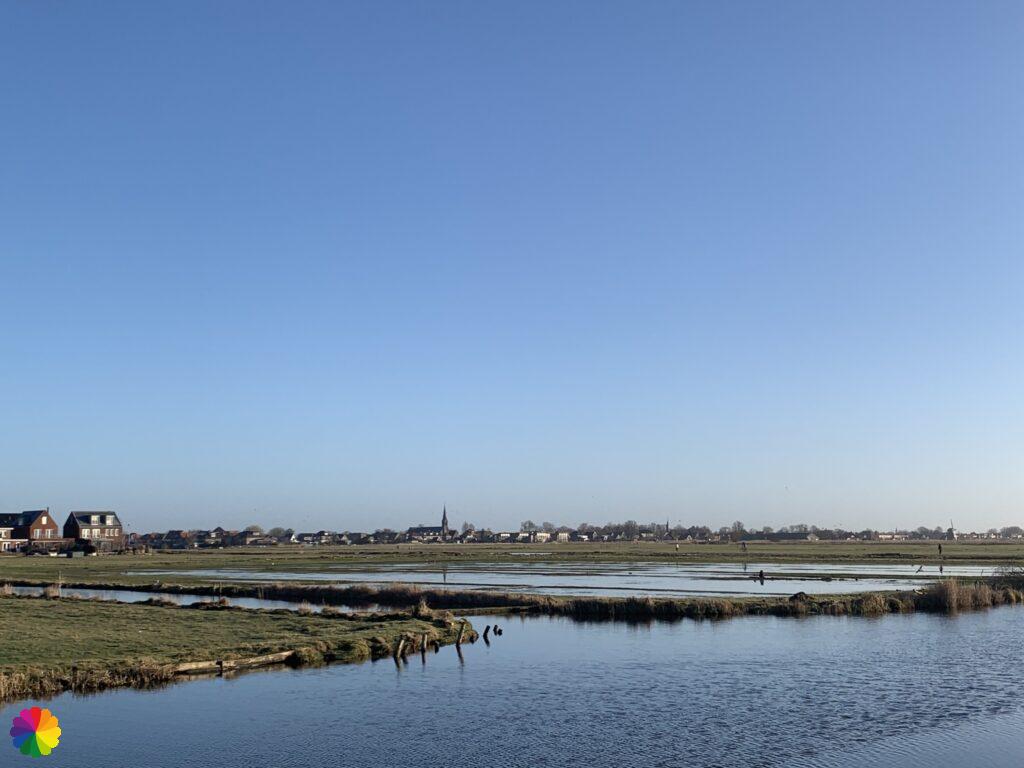
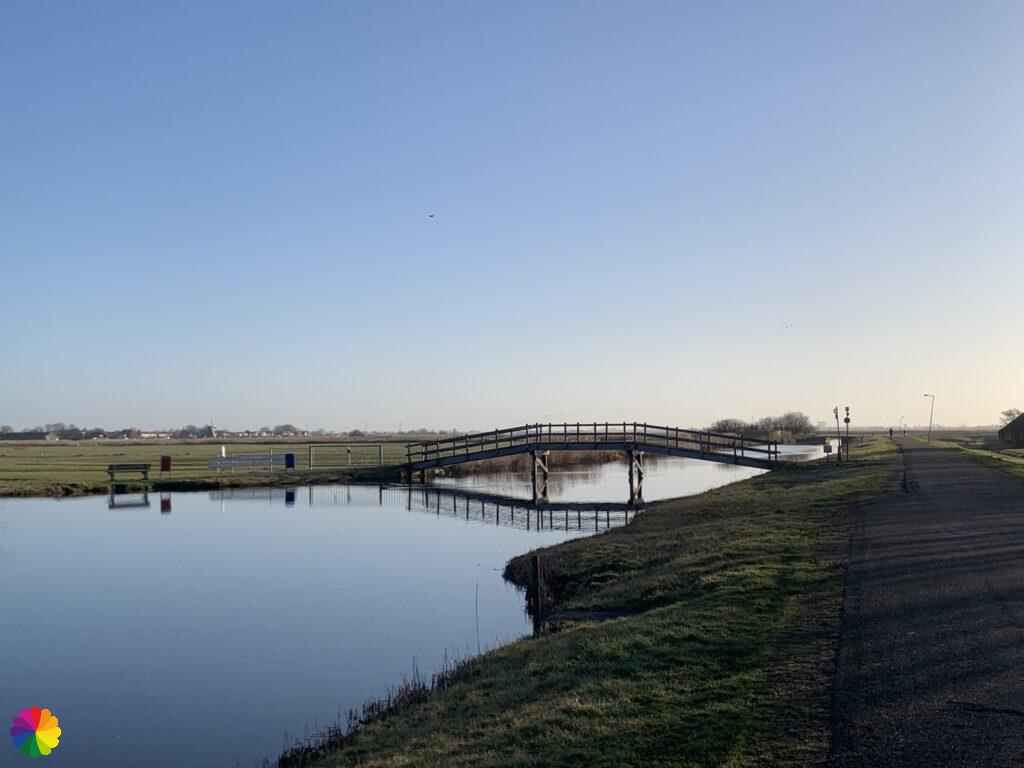
After a few minutes, I continue along the Engewormer. I walk past farms and wide-open polders with many canals. On this part of the Migration birds trail, I encounter many birds, such as grebes, widgeons and different species of geese. Below, you can see the list of birds that I encountered during this hike. I have also included the black-tailed godwit, although I am not entirely sure I saw them. Later on, I was 100% sure that I saw this species. The same applies to the pied avocet.
| Birds seen between Zaanse Schans/Wormer and Den Ilp in the Netherlands | |||
|---|---|---|---|
| ✔ Black-headed gull | ✔ Eurasian jay | ✔ Greater Canada goose | ✔ Oystercatcher |
| ✔ Black-tailed godwit | ✔ Eurasian Magpie | ✔ Greater white-fronted goose | ✔ Pied avocet |
| ✔ Carrion crow | ✔ Eurasian koot | ✔ Grey heron | ✔ Pink-footed goose |
| ✔ Common Pheasant | ✔ Eurasian wigeon | ✔ Greylag goose | ✔ Stock dove |
| ✔ Common starling | ✔ European herring gull | ✔ House Sparrow | ✔ Tufted duck |
| ✔ Common moorhen | ✔ European Robin | ✔ Mallard | ✔ Tundra bean goose |
| ✔ Common wood pigeon | ✔ Great crested grebe | ✔ Mute swan | ✔ Western great egret |
| ✔ Egyptian goose | ✔ Great spotted woodpecker | ✔ Northern lapwing | ✔ Western jackdaw |
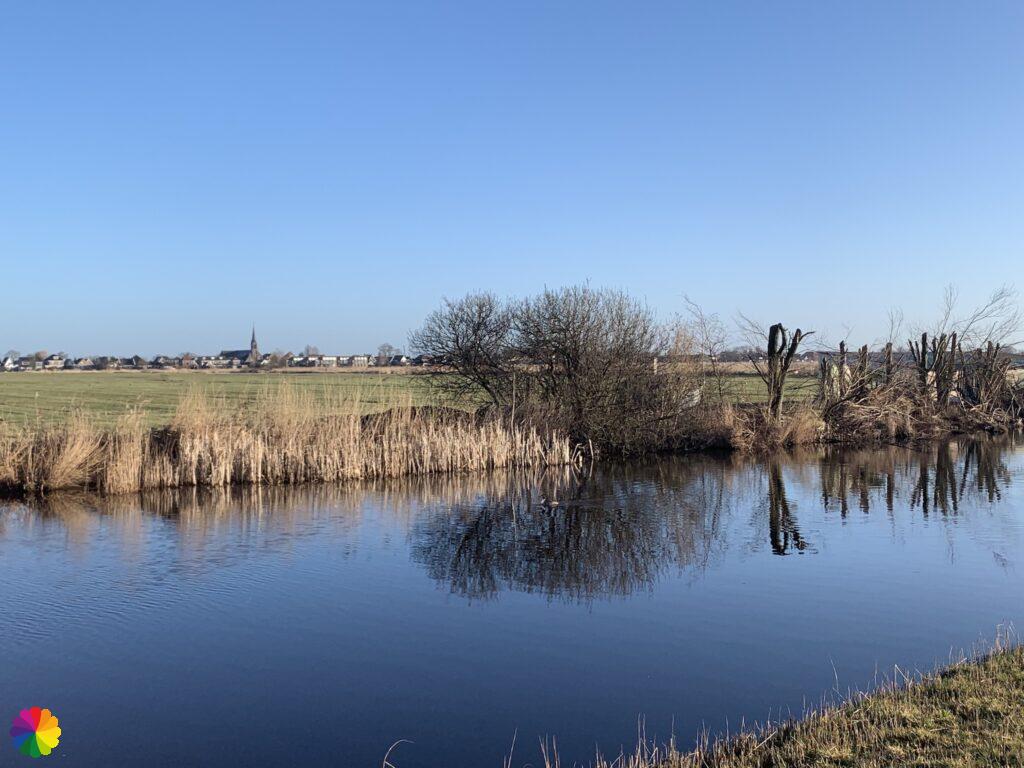

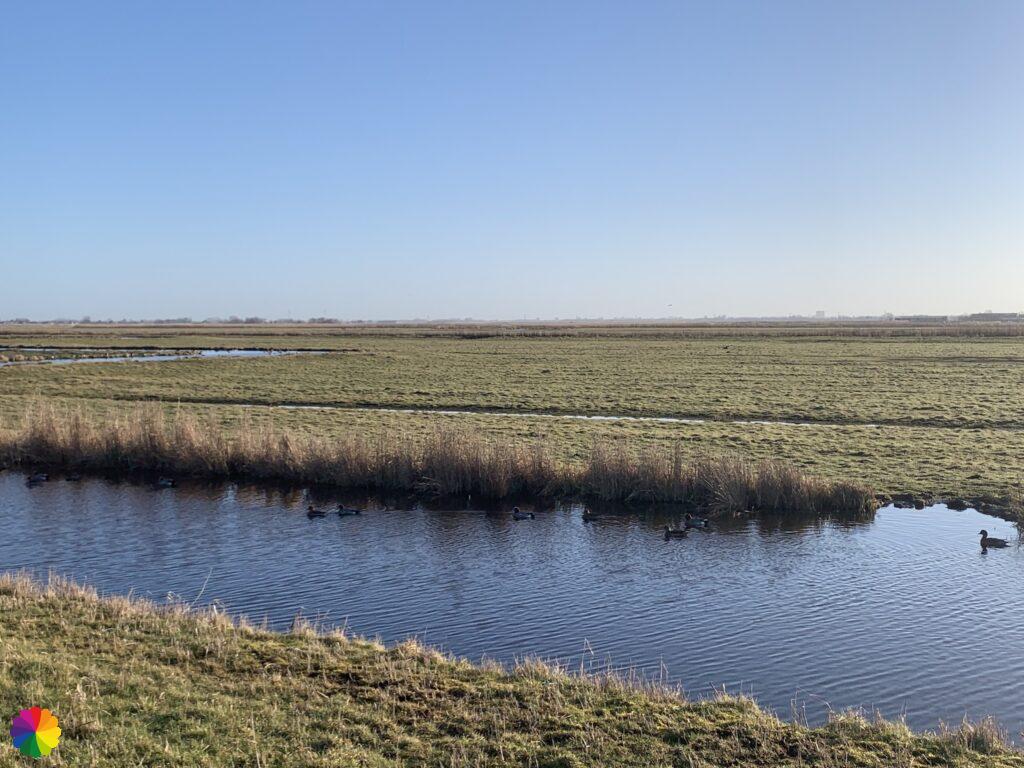

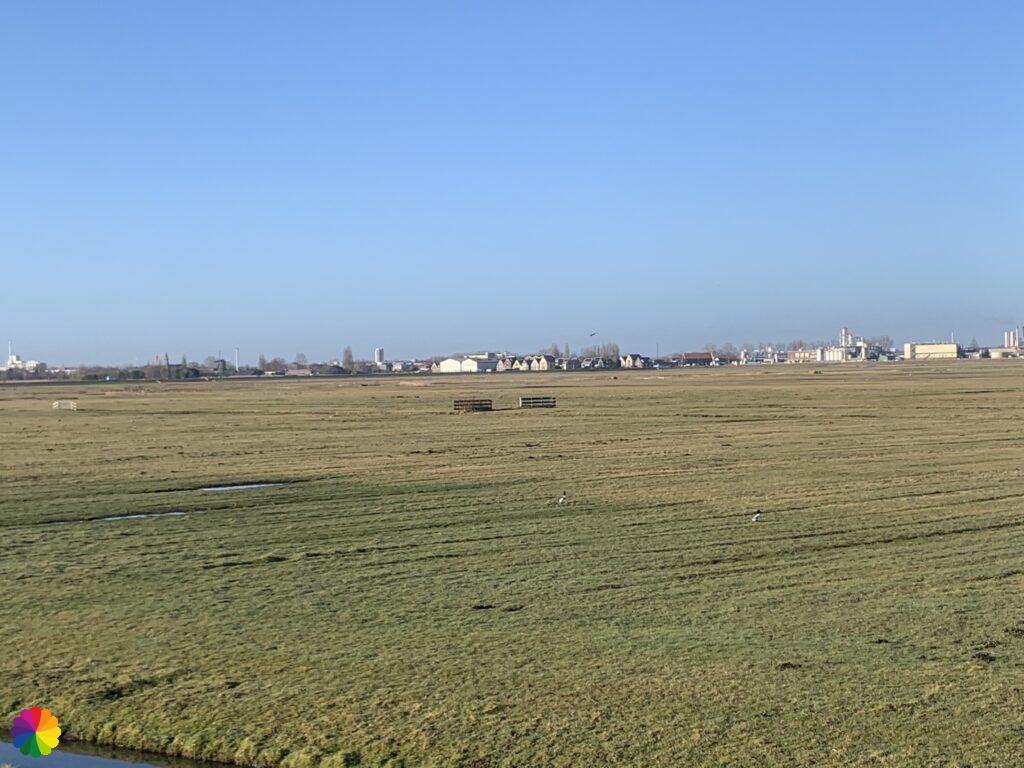
Because I encountered so many birds during this hike, I have made a kind of compilation in an illustration of the most special species I saw. Which birds do you recognise? Leave it in the comments below, if you know it.
I walk along the water that glitters in the sun. The Engewormer turns into the Ringdijk and in the distance I see another windmill. This time, not a Dutch one but an American windmill, it has the name Herkules (Hercules).
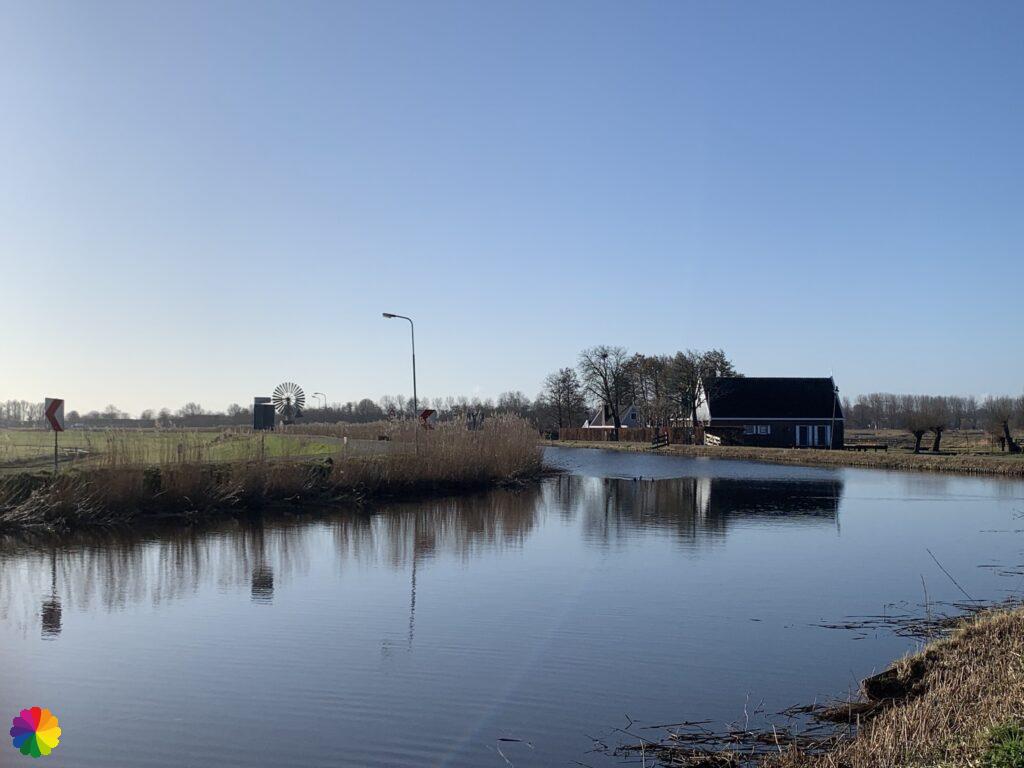



At the end of the Ringdijk, I have to cross a busy road and then turn right into a residential area of Zaandam.
Jagersveld and Oostzanerveld
Soon I am out of the residential area again and arrive at the recreation area Jagersveld. Up to now, I have only come across cyclists and runners, but here it is already a bit busier with people going for a stroll. I walk over winding paths through the Jagersveld and along the Jagersplas. In the bare trees, I see a jay and a great spotted woodpecker. Two more birds to put on my list.
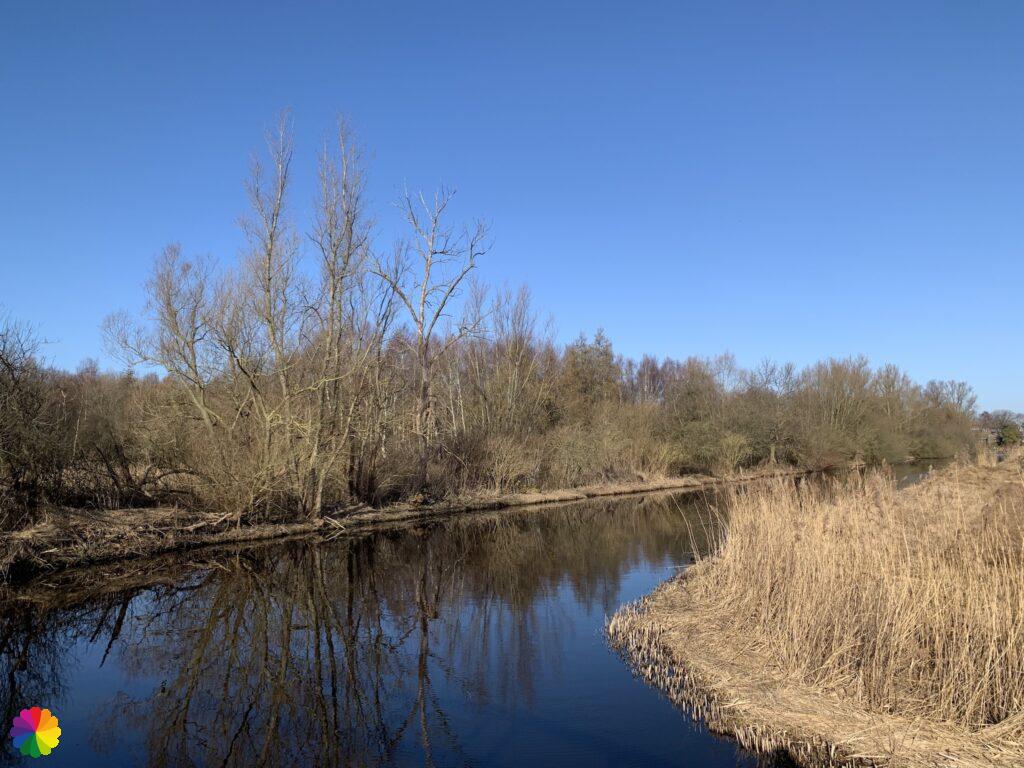


I get closer and closer to the motorway and have to go underneath it. Via a large loop on the cycle path, I first walk along the motorway and then over a viaduct to cross a train track. On the viaduct, I have a phenomenal view over the Oostzanerveld. I understand that you can cut off a piece of the loop via a hole in a fence. You can go up the slope of the viaduct. I did not notice this myself and just went over the cycle path. But from the viaduct, I can descend the slope again on the other side via a similar path.


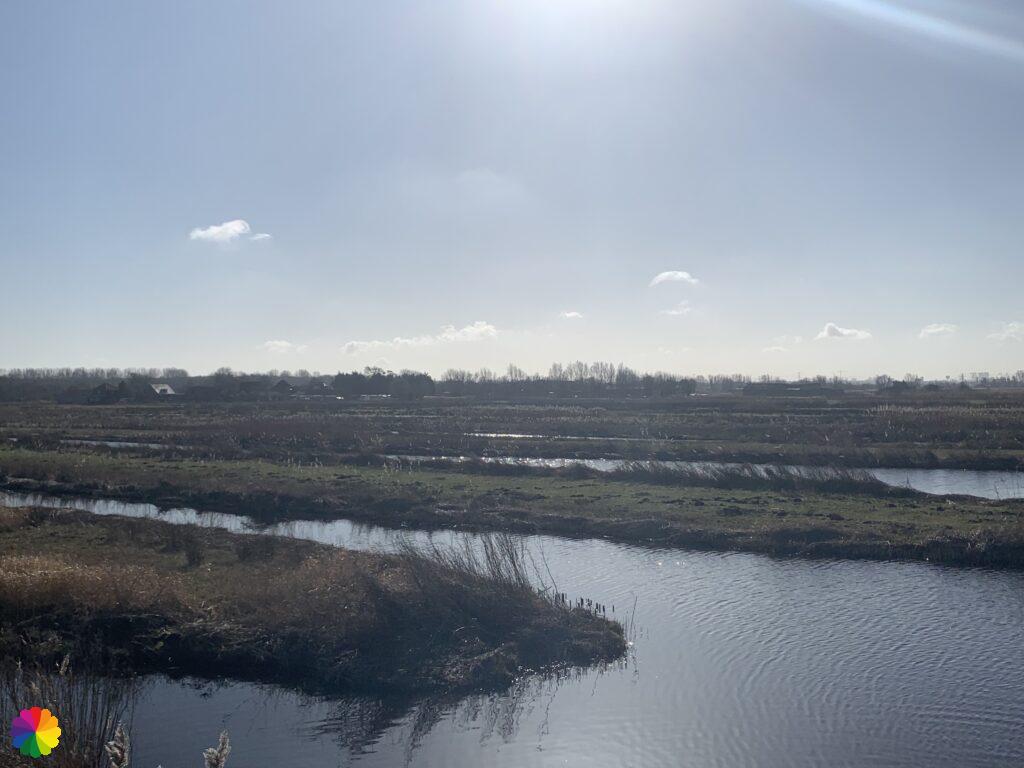
The following few kilometres I walk along the cycle path with the train track on my left and with a beautiful view on my right. The trail bends to the right and I pass a few houses. In the hedge along the path, groups of house sparrows are chirping cheerfully. I have to cross a small bridge and I am at the Twiske nature reserve and recreational area.
The Twiske
Until now, I have only walked on paved paths, but that is about to change. I enter the nature reserve through a small fence. I walk along winding paths with a view of fields and many pools of water. I enjoy it to the fullest. The birds, with the exception of a few geese, keep quiet. It is later in the morning and the birds are not singing as much any more.
The Twiske is a nature and recreation area north of Amsterdam and east of the Zaan region. The recreation area is 650 hectares and surrounds the Stootersplas. The west and south are particularly good places for recreation with sandy beaches and playgrounds for kids, and many watersports facilities. The east and north of the area are designed for nature lovers. The Migration birds trail goes through a big part of the Twiske.
Source (in Dutch): Wikipedia
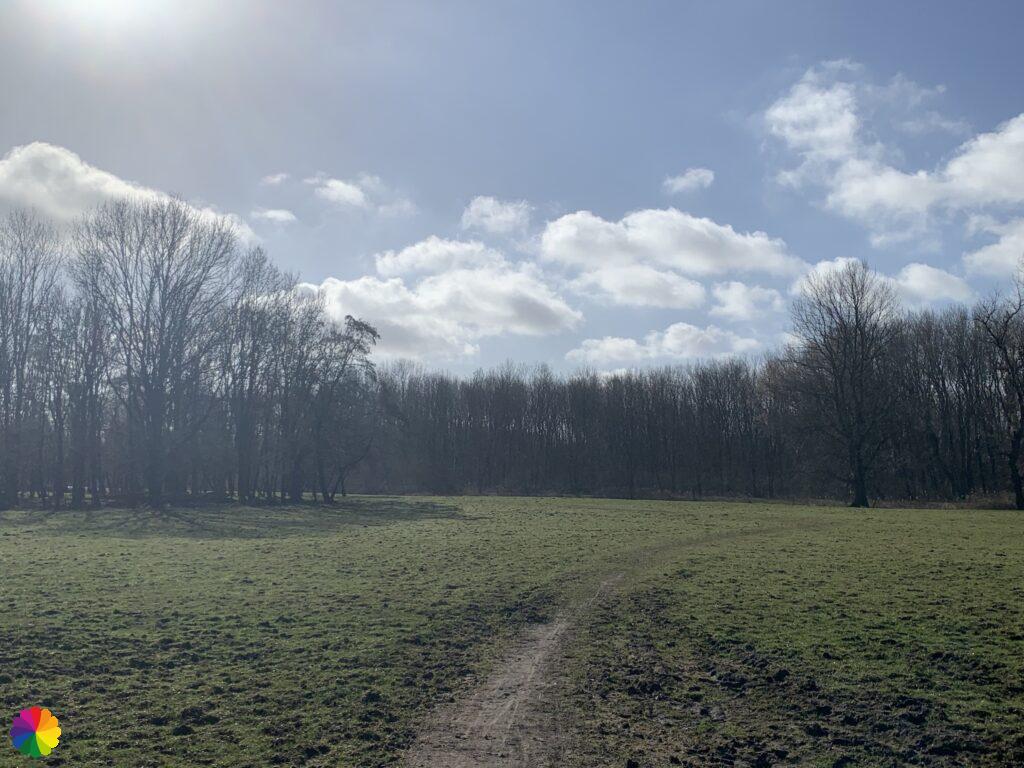



I can tell from the fences and the cattle grids that I might encounter cattle. And this is the case. In the distance, I can see a few cows, so I dare to pass them. But when I come closer, I see that there is a feeding site on the right and that there are more cows than I thought. I don’t dare pass them and decide to walk around the herd via the cycle path along the Twiske. I can then pick up the trail further on. So I walk back to the fence. Further on, at another entrance, I see where I should have walked and quickly take a photo (as proof 🙂 ). I am glad I did a detour, because there are quite some cows. Although, two other hikers pass by and just walk between the cattle. They don’t look up or down. I am such a scaredy-cat sometimes!

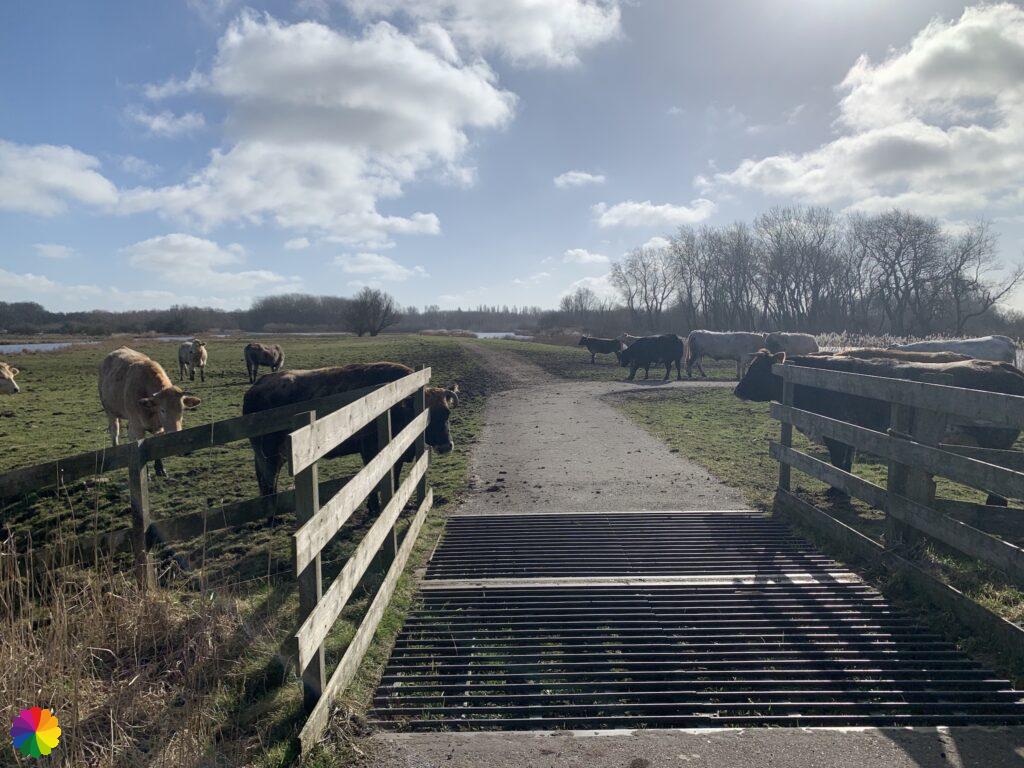
The next part through the Twiske is very different from earlier. Even more views over the water, but also more swampy fields with trees and bushes. Near a large lake is a bird-watching screen. An information panel shows which birds can be found here. I peek through the holes in the screen, but of course there is no bird to be seen.

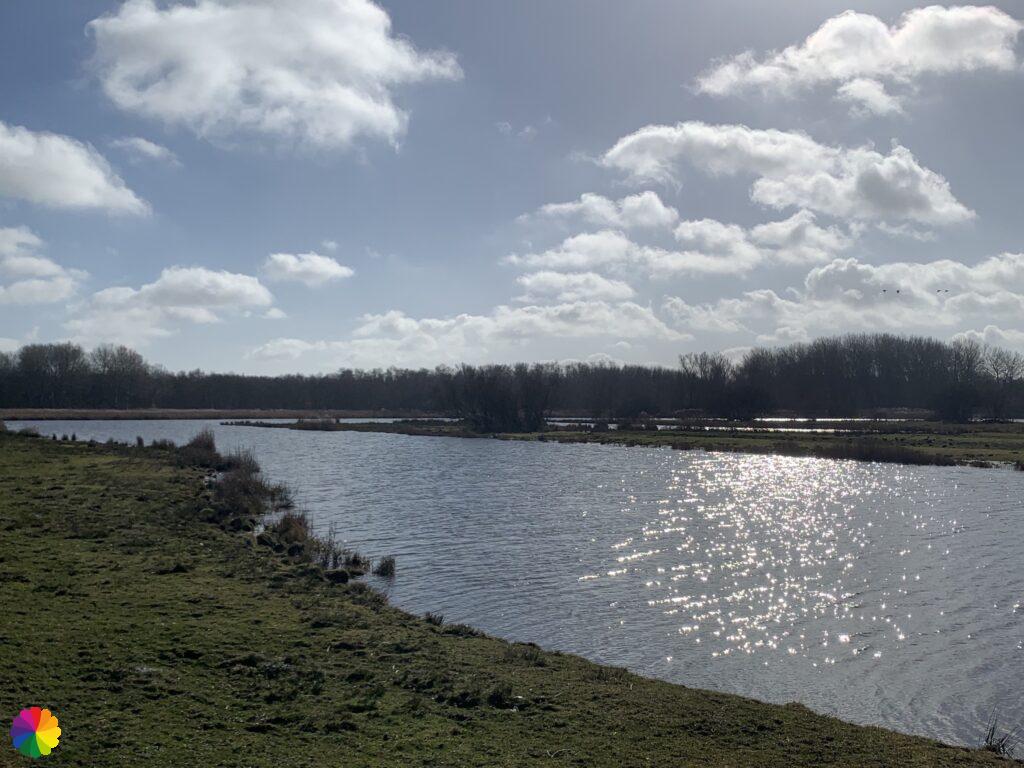

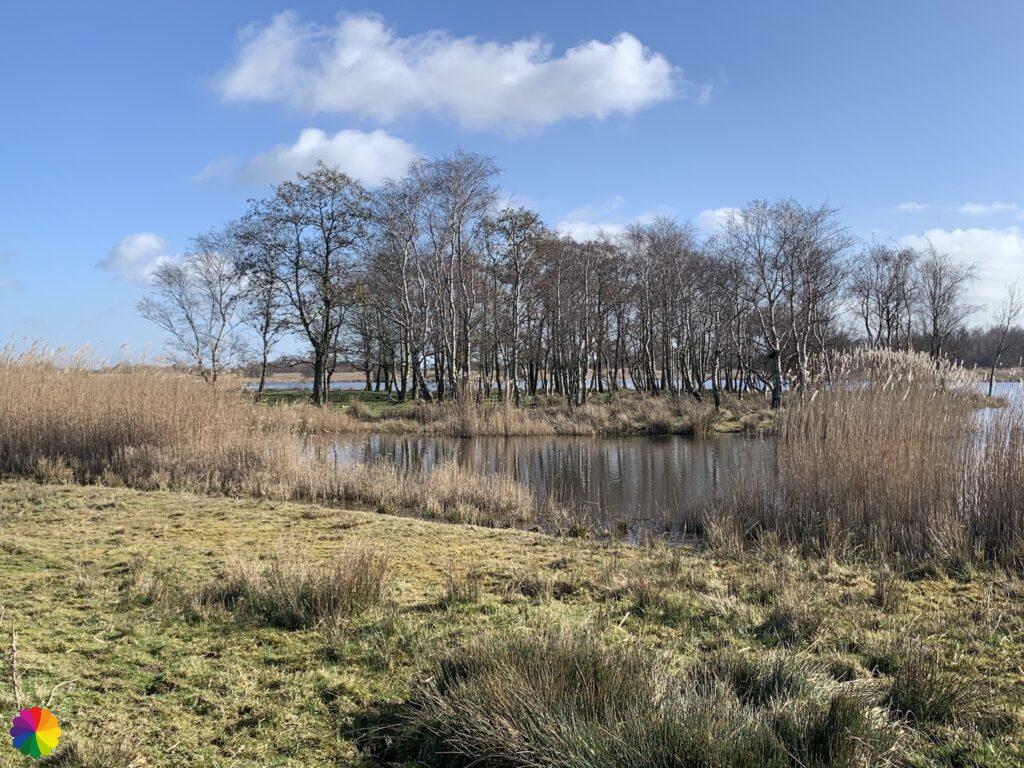
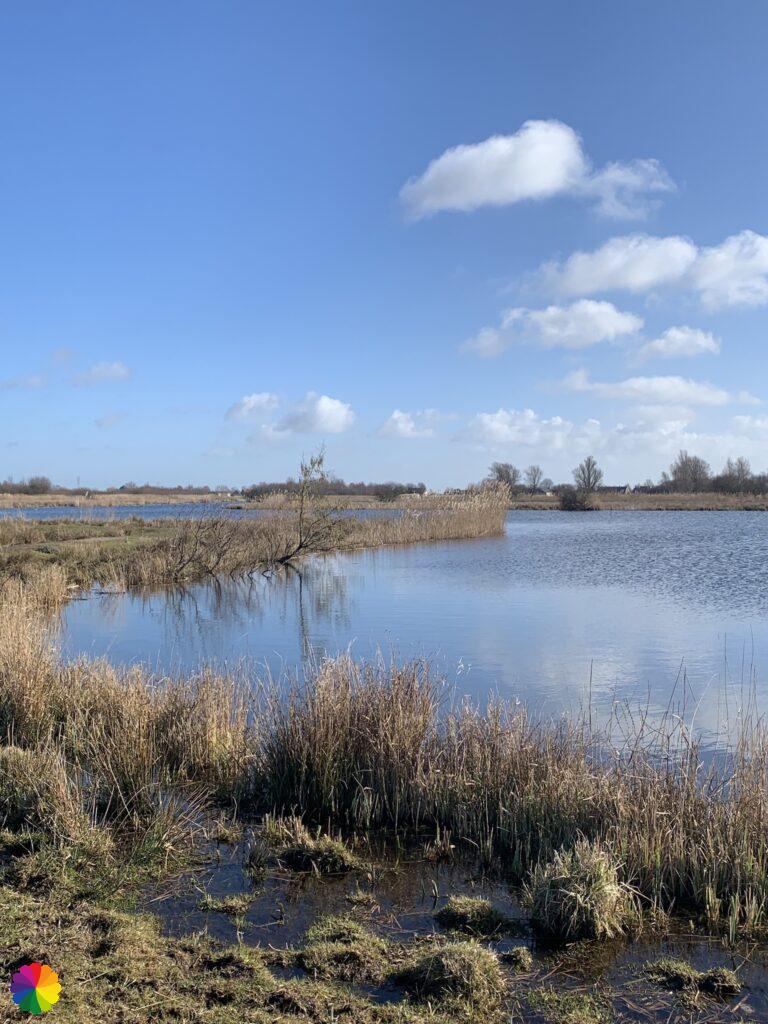
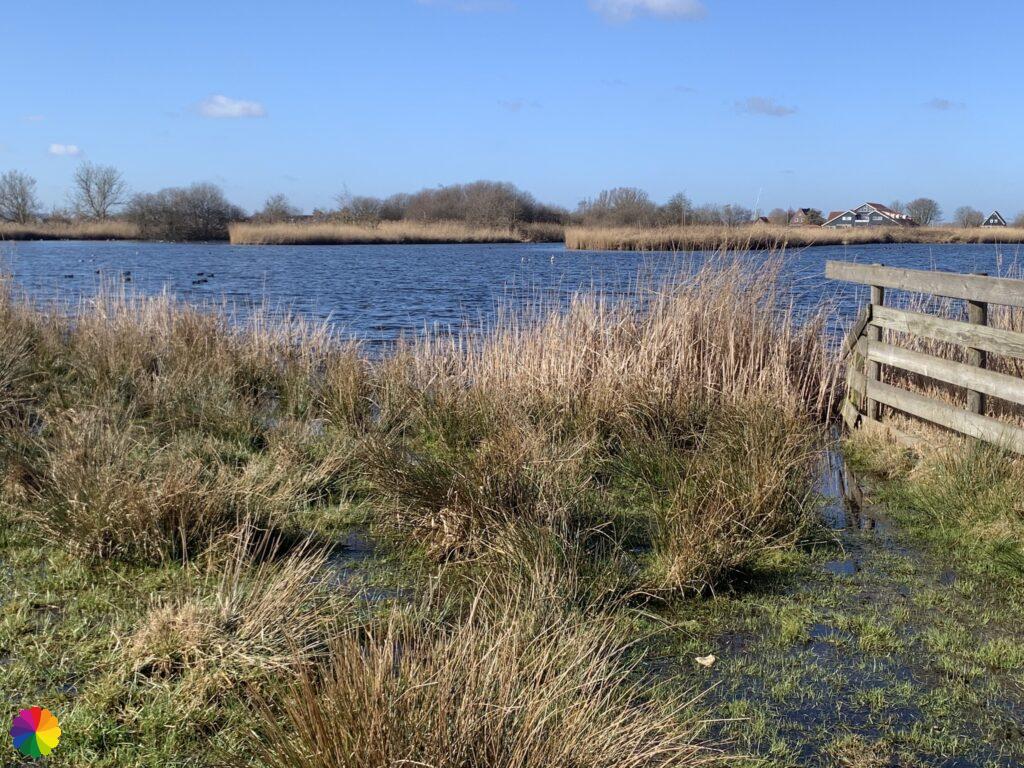
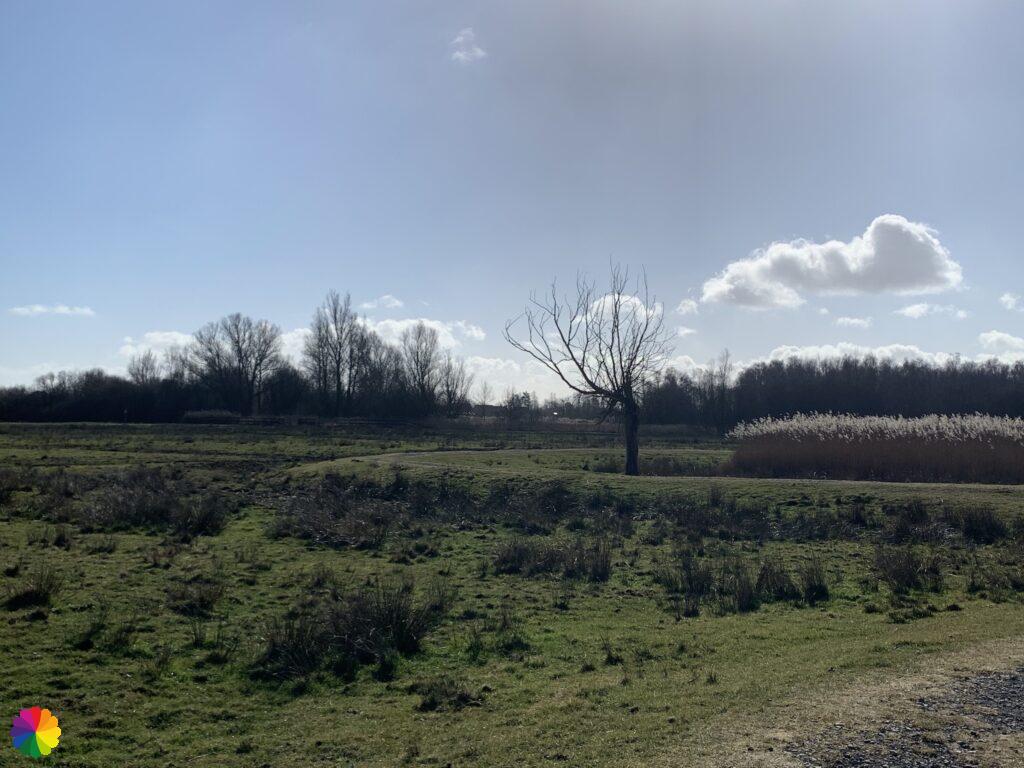
After a few more winding paths, I am halfway through the Twiske and at my destination for the day. Parallel to the nature reserve lies the small town of Den Ilp, from where I can take the bus back home. Next time, I will continue the trail through this beautiful nature reserve.
Final thoughts
How beautiful the Netherlands can be, this was absolutely another wonderful hike! I didn’t find it boring for a second. It is recommended to do the trail via Zaanse Schans early in the morning or during a pandemic 😉. Then there are no busloads of tourists and you can view all the mills at your own pace. Visiting the mills, if you are interested in that, is a bit more difficult then.
The sections through Engewormer, the Jagersveld, the Oostzanerveld and the Twiske were very beautiful too. And you can visit all these places within a few hours via the Migration birds trail!
More info:
Trail: Section 4 Long distance trail 2: Migration birds trailWhere: from Zaanse Schans to Den Ilp, Noord-Holland, the Netherlands.
No. of km: +/- 17 km
Hiking date: 26 February 2021
Materials used in illustrations: coloured pencils for the map and watercolour paints for the other illustrations
Rating: ⭐⭐⭐⭐⭐
Pin this hike
Would you like to do this wonderful hike as well? Pin this hike on Pinterest to save for later!

ColourFlux Studio makes use of so-called affiliate links. If you buy a product through the link in an advertisement, ColourFlux Studio receives a small amount. There are no additional costs for the buyer.
Back to Blog
